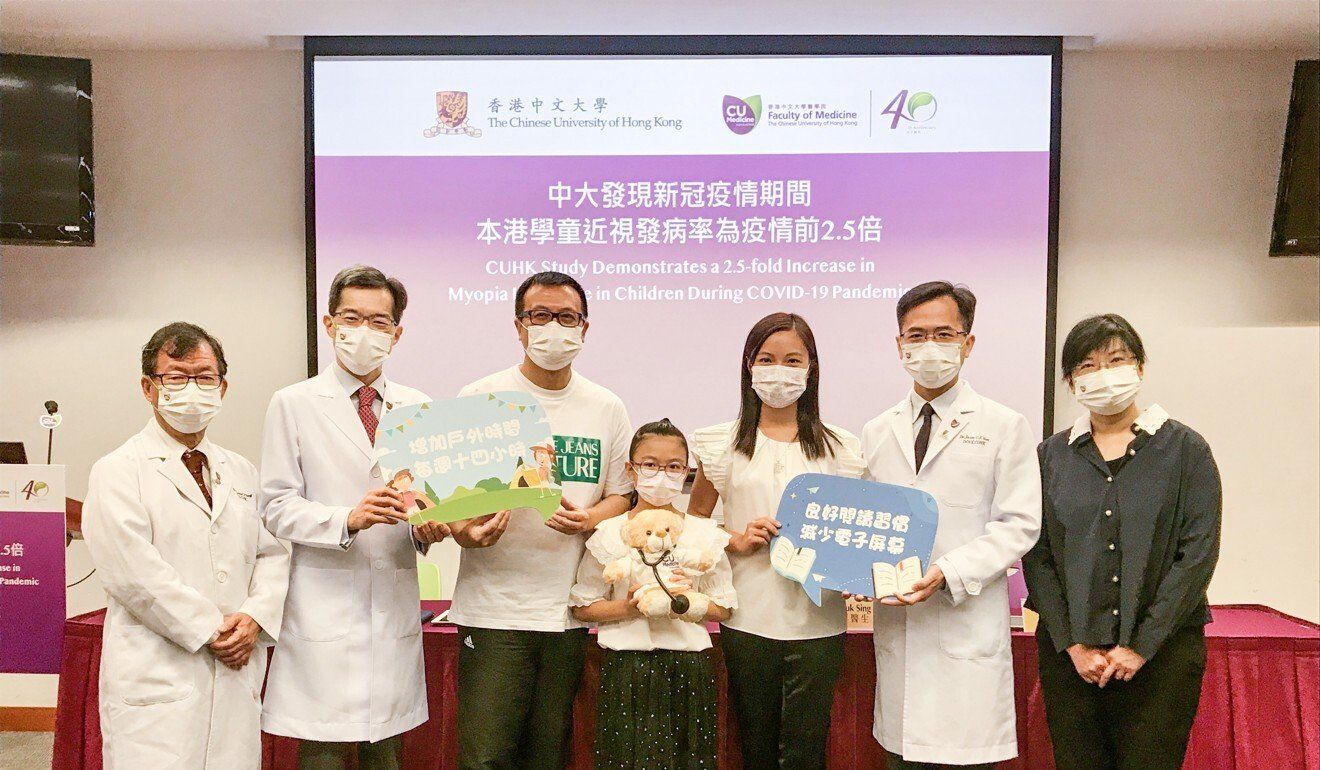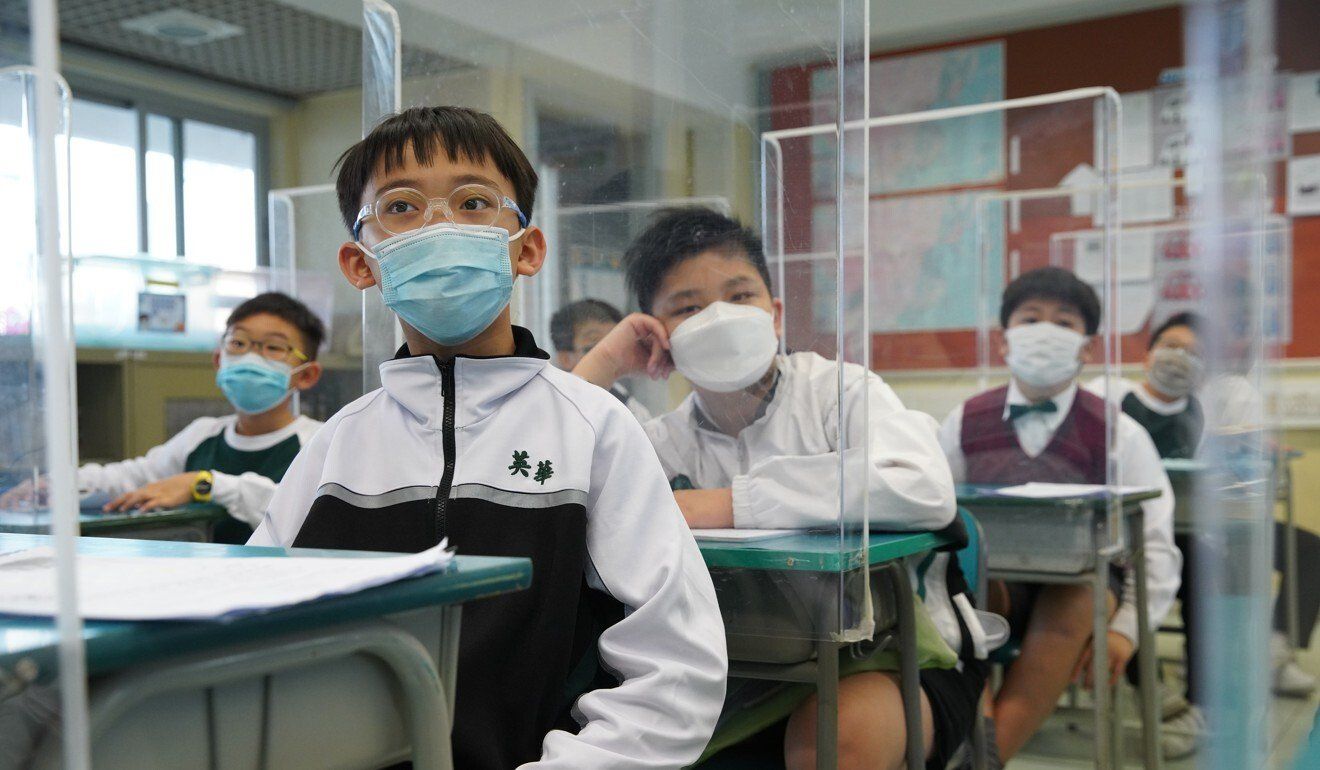Hong Kong News

Pandemic contributing to ‘myopia boom’ among Hong Kong children, study finds
The percentage of Hong Kong children who develop nearsightedness has increased an estimated 2½ times during the coronavirus pandemic, according to a study, which has attributed the “myopia boom” to students spending less time outdoors and more staring at screens.
The Chinese University study, which was released on Monday, found schoolchildren spent an average of almost seven hours a day looking at screens during the pandemic, around four hours more than before. At the same time, the average amount of time spent outdoors dropped from 1.27 hours a day to just 24 minutes.
The study’s principal investigator, Dr Jason Yam Cheuk-sing of the department of ophthalmology and visual sciences, said insufficient outdoor activities coupled with prolonged stretches of so-called near work – which included reading, writing and using electronic gadgets – corresponded with myopia progression.
“Therefore, unfortunately, our study reflects that myopia in Hong Kong’s schoolchildren has begun to boom,” Yam told a press conference on Monday.
Myopia occurs when the eyeball is too long from front to back, or when the curvature of the cornea or lens is too extreme, causing light rays to be focused in front of the retina, instead of exactly on it, leading to blurred vision when looking at objects far away.
For the study, the Chinese University researchers randomly recruited 709 children aged six to eight between December 2019 and January 2020, and then tracked their eyesight for at least eight months. The results were then compared with a control group of another 1,084 children who had been studied for three years before the pandemic, starting in 2017.
Of the 709 children, 576 did not have myopia when they were recruited. Of those, 112 – or 19.4 per cent – were found to have developed the problem by the end of the eight months.
The results led researchers to project that the annual incidence rate of myopia could reach 29.7 per cent amid the pandemic, compared with just 11.6 per cent before.
 Researchers Calvin Pang (left), Jason Yam (second right) and others pose
with study participant Nicole Leung, eight, (middle) and her parents at
a press conference on Monday.
Researchers Calvin Pang (left), Jason Yam (second right) and others pose
with study participant Nicole Leung, eight, (middle) and her parents at
a press conference on Monday.
They also discovered that myopia developed in children twice as quickly during the pandemic, by an average of minus 0.8 dioptres per year. A dioptre, expressed in negative figures for myopia, is a unit for measuring the power of the lens needed to correct a person’s vision. The higher the number, the more severe the myopia.
Professor Calvin Pang Chi-pui said “high myopia”, generally defined as minus 6.0 dioptres or above, required treatment, as it could lead to complications such as macular degeneration, retinal detachment, glaucoma and cataracts later in life, which could cause permanent loss of vision.
“When the eye’s axial length is too long, other than having nearsightedness, there may be other complications, such as the thinning of the choroid and sclera,” he said, referring to the outer two layers of the eyeball. “It cannot be alleviated by corrective surgeries or wearing glasses, since the eyeballs are already elongated.”
Yam said the ages of six to eight were “the golden period” for correcting children’s eyesight.
Around 18 per cent of six-year-old children are nearsighted in Hong Kong, according to the Department of Health, with the percentage increasing to about 62 per cent by Primary Six.
Study participant Nicole Leung Ting-ka, eight, has been nearsighted since Primary One, and required minus 4.0-dioptre corrective lenses for both eyes when she was recruited in January 2020. By August of that year, however, her myopia had worsened by minus 1.25 dioptres in both eyes.
“Sometimes I felt very uncomfortable. When I was looking at my tablet, my eyes would tear up,” she said at Monday’s press conference. “My eyes would get so tired and could not be opened. I wanted to rest my eyes.”
 The typical incidence rate of myopia among local six-year-olds is 18 per
cent, with the figure rising to 62 per cent by Primary Six.
The typical incidence rate of myopia among local six-year-olds is 18 per
cent, with the figure rising to 62 per cent by Primary Six.
Before the pandemic, Leung would spend about 30 minutes a day on her tablet, but that soon ballooned to three to four hours when face-to-face classes were suspended in favour of online ones to prevent the spread of the coronavirus.
“After the lessons, she had to work on online homework, which would be sent to the school. In the past, she only had to work on homework in hard copies,” her father said.
Her outdoor time also shrank during the pandemic. “We would go running or ride bicycles during weekends before the pandemic. But during the pandemic, we stayed at home for the whole day for almost half a year,” her mother said.
After consultation with the researchers, Leung was advised to use atropine eye drops, which can dampen her myopia, and to spend at least 14 hours a week outside. Her myopia has since held steady at minus 5.25 dioptres in her right eye, and improved to minus 4.75 dioptres in her left.
Yam suggested all children go outdoors for at least two hours a day, saying sunlight was crucial to the prevention of myopia.
“You can read, run or do exercises. All you need to do is to be exposed to daylight. Based on current studies, if there is enough daylight, our eyeballs will be stimulated to produce dopamine, which can prevent our eyeballs from growing too long,” he added. “It can help slow down myopia progression by 30 per cent.”
He also suggested parents encourage their children to develop good reading habits, such as resting their eyes every 30 minutes, using adequate light and holding the text at least 30 centimetres away.











